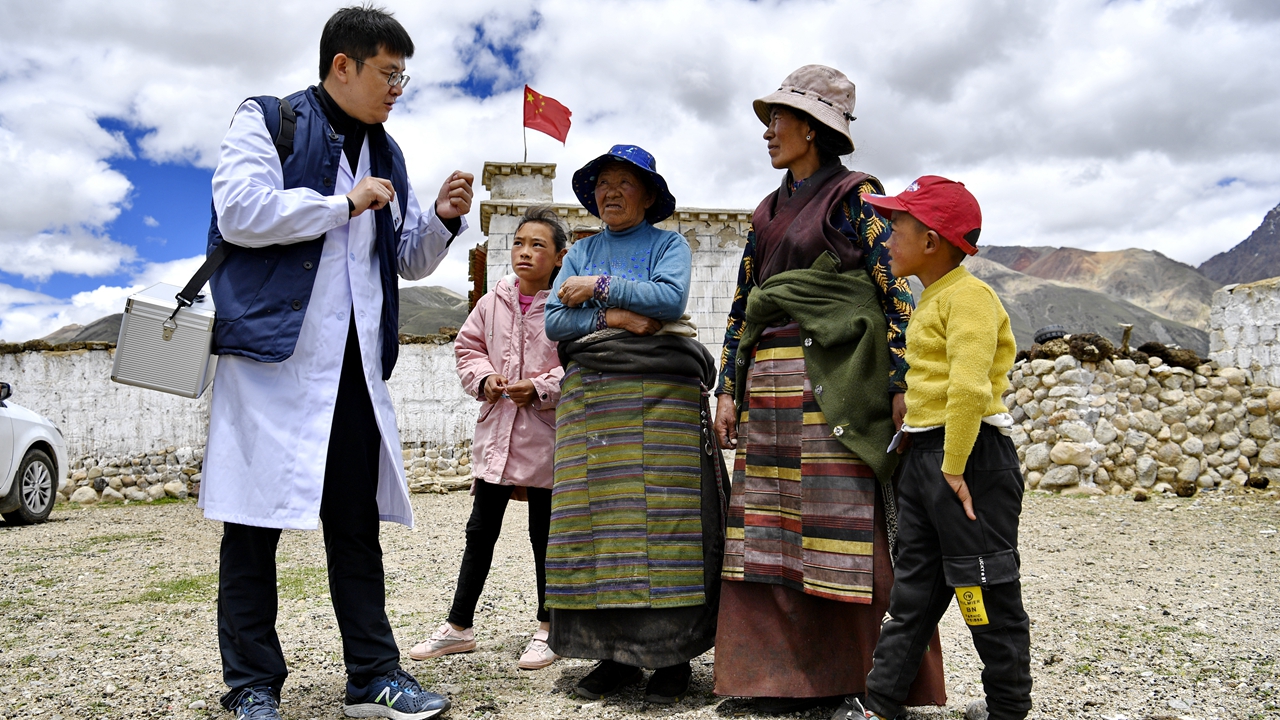Tibet's rural residents enjoy better livelihood
Located on the Qinghai-Tibet Plateau, known as the “roof of the world,” Southwest China’s Tibet Autonomous Region has experienced a decade of extraordinary transformations with the support of the Central Government and the entire country.
Rural residents in Tibet have achieved fruitful results and seen improved livelihood, with their per capita disposable income maintaining double-digit growth for 19 consecutive years. In 2021, the per capita disposable income of rural residents in Tibet reached 16,935 yuan (US$2,385), 2.97 times the income recorded in 2012, said Du Jie, director of the regional department of agriculture and rural affairs. The income growth has been the highest nationwide for seven consecutive years.
Since 2012, more than 337 billion yuan has been spent as fixed-asset investment in Tibet’s transport sector, according to the region’s transport department.
Over the past decade, three railway lines have formed a “Y” shape on the plateau region, with the latest Lhasa-Nyingchi line, the region’s first electrified railway line, kicking off operation June 25, 2021. The total length of roads in Tibet has increased by some 55,000 km to 120,000 km over the past 10 years, including more than 90,000 km of rural roads, according to official figures.
Improved transportation network has rendered a further boost to tourism in the region. Rural Tibet attracted more than 12.7 million tourists last year, generating about 1.6 billion yuan in tourism revenue.

A medical professional Wang Keming (L) interprets basic medical knowledge to rural residents in Geda Village, Tibet.
Thanks to the country’s pairing-up assistance mechanism, by the end of June, seven batches of more than 1,300 medical professionals nationwide have trained more than 2,400 local doctors of different levels for Tibet. At the same time, hospitals in Tibet sent 1,800 local medical personnel to their pairing-up provinces and municipalities for further study. The average life expectancy in Tibet rose from 68.2 years in 2015 to 72.19 years.
Improved transport facilities, telecommunications networks and courier service coverage have contributed to e-commerce development in the region, with online shops and consumption surging rapidly. Local specialties are sold to other parts of China via online e-commerce platforms.
At a workshop in Chagyab County, more than 30 artisans were busy producing goldware and silverware.
Tengpa Doje, an inheritor of the craft, said villagers earlier processed gold and silver at home with low efficiency and poor product quality. “Thanks to the workshop, we can pool wisdom to attract young artisans and consumers with our products,” he said.